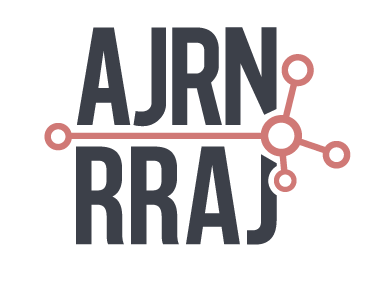“IMPORTANT NOTICE: In light of COVID-19, we have moved to telephone only.”[1]
Over the course of the COVID-19 pandemic, community legal clinics, pro bono services, and other legal service providers have updated their websites with similar notices. The pandemic has prompted major changes to the delivery and focus of pro bono and legal clinic services in Ontario. Since the early months of the pandemic, there have been concerns that the combination of case backlogs, interest rate cuts, and the 30-percent funding cut to legal aid in 2019 might spell crisis for legal clinic services in the province.[2] The marked increase in experiences of some types of legal problems,[3] coupled with ongoing mental health, physical health, social and economic strains of the pandemic have created additional challenges for legal service providers and those in need of their help. Below, we provide some examples of some of the ways that legal clinic and pro bono services in Ontario have adjusted aspects of their operations to meet changing circumstances and shifting demands during the pandemic.
Remote Service Delivery
Customarily, Ontario’s community legal clinics and pro bono services have offered legal assistance in-person, with limited options for alternative delivery methods such as dial-in services and summary advice over the internet. Provincial lockdowns, public health mandates that have restricted the number of people who can gather indoors, and physical distancing directives have made many alternative delivery methods the norm. In accordance with public health mandates, many legal clinics in Ontario suspended in-person consultations or have reduced them significantly. With concerns of a fourth wave in fall 2021, remote service delivery measures may remain in place much longer than initially anticipated.
Changes to Services
The pandemic has put pressure on the legal system in different ways, including with new types of legal problems that raise specific, pandemic-related issues. Legal service and information providers across Ontario have responded by tailoring their services and resources to address many of these COVID-19 related questions. For example, Community Legal Education Ontario (CLEO), an organization that provides free legal information and works to educate people on their legal rights, has updated their Steps to Justice information service to include COVID-19 related legal questions on employment, income assistance, housing, family, immigration, wills, and other legal matters.[4]
Community legal clinics in Ontario are also advocating for the public in matters related to COVID-19. One example is the Vaccines for All initiative to which several legal clinics in Ontario are signatories. The initiative is working to advance equal access to COVID-19 vaccines for migrant workers, regardless of their immigration status.[5]
Community-Based Services as Hubs for Social, Health and Legal Information on COVID-19
The pandemic has brought many socio-legal and health-justice issues to the forefront. There has long been an understanding that health problems and legal problems are often interrelated; the same is true of social problems and legal problems.[6] Ontario’s community legal clinics have produced, and now offer a variety of COVID-19 specific resources that speak to the types of interrelated legal, health and social problems that have arisen or increased during the pandemic. The Community Legal Clinic of York Region, for example, has added a page to their website that lists and provides information on social and health resources in the York region related to COVID-19; the page is updated as the legal clinic is alerted to new resources and services.[7]
As an example, the South Asian Legal Clinic of Ontario has published a series of fact sheets on COVID-19 specific social services and how they relate to the legal services provided by the clinic.[8]
An Expansion of Legal Service Availability
It is no secret that Canada is facing an access to justice crisis. The pandemic has only exacerbated this crisis.[9] In recent months, and to help meet an increase in demand for legal help, there has been a move to increase access to pro bono and community-based legal services. Legal Aid Ontario has temporarily increased eligibility thresholds for legal aid certificates, and waived requirements for some matters involving domestic abuse and child protection.[10] They have also waived eligibility requirements for 20-minute summary legal advice phone calls for family law matters and criminal matters.[11]
As an example of a national effort, in response to the pandemic, the National Canadian Lawyers Initiative (NCLI) launched a 1-year program to provide free legal advice to small businesses and Canadians.[12]
Legal Clinics beyond the Pandemic
The COVID-19 pandemic has profoundly impacted legal service delivery in Ontario. This impact will be felt for years to come. Several legal studies are underway that seek to understand the extent of these impacts for users and providers of legal services in Ontario[13] and elsewhere.[14] For now at least, legal clinics and pro bono services in Ontario continue to negotiate the challenges of addressing increased public need with insufficient funding amidst a public health crisis that remains uncertain.
[1] This message is displayed at the top of Parkdale Community Legal Services website, accessed on 30 August 2021, online: <https://www.parkdalelegal.org/>.
[2] John Schofield, “Surge in COVID-19 justice issues could spur Legal Aid Ontario funding crisis, lawyers warn”, The Lawyer’s Daily (20 August 2020), online: <https://www.thelawyersdaily.ca/articles/20573/surge-in-covid-19-justice-issues-could-spur-legal-aid-ontario-funding-crisis-lawyers-warn>.
[3] Pro Bono Ontario indicated that they were experiencing a 153 per cent increase in requests for assistance with employment-related problems and a 145 percent increase in housing calls from 2019 to 2020. See Nicole Brockbank, “Calls for free civil legal advice are up 72% in Ontario this year because of COVID-19”, CBC News (21 December 2020), online: <https://www.cbc.ca/news/canada/toronto/ontario-free-civil-legal-hotline-demand-up-1.5845540>.
[4] See CLEO Step to Justice, “COVID-19”, online: <https://stepstojustice.ca/legal-topic/covid-19/>.
[5] ”See Migrants Rights, “Vaccines for All”, online: <https://migrantrights.ca/vaccinesforall/>.
[6] Trevor C.W Farrow., Ab Currie, Nicole Aylwin, Les Jacobs, David Northrup, Lisa Moore, “Everyday Legal Problems and the Cost of Justice In Canada: Overview Report” (Toronto: Canadian Forum on Civil Justice, 2016) at 12, online: <https://www.cfcj-fcjc.org/sites/default/files/Everyday%20Legal%20Problems%20and%20the%20Cost%20of%20Justice%20in%20Canada%20-%20Overview%20Report.pdf>.
[7] See Community Legal Clinic of York Region, “COVID-19”, online: <https://clcyr.on.ca/covid-19/>.
[8] See for example South Asian Legal Clinic of Ontario, “COVID-19: Uninsured & Access to Health” (14 April 2020), online: <https://salc.on.ca/wp-content/uploads/2020/04/COVID-19-Uninsured-Access-to-Health-Updated-April-14-2020.pdf>.
[9] Olivia Stefanovich, “’We’re in trouble’: Advocates urge Ottawa to help close the access-to-justice gap”, CBC News (18 April 2021), online: <https://www.cbc.ca/news/politics/access-to-justice-federal-budget-2021-requests-1.5989872>.
[10]See Legal Aid Ontario, “COVID-19: Emergency legal aid services set to change” (accessed 30 August 2021), online: <https://www.legalaid.on.ca/news/covid-19-emergency-legal-aid-services-set-to-change/>.
[11] Legal Aid Ontario, “Temporary service changes due to COVID-19” (5 July 2021), online: <https://www.legalaid.on.ca/covid-19-legal-aid-services/#change-01-title>.
[12] Kamille Coppin, “The NCLI is Providing Legal Aid to Small Businesses and Canadians in Need”, Bay Street Bull (23 June 2020), online: <https://baystbull.com/the-ncli-is-providing-legal-aid-to-small-businesses-and-canadians-in-need/>.
[13] See for example Steve Matthews, “The Impact of COVID-19 on Legal Services in Ontario”, Slaw (7 May 2021), online: Slaw <http://www.slaw.ca/2021/05/07/the-impact-of-covid-19-on-legal-services-in-ontario/>.
[14] The Canadian Forum on Civil Justice is a partner in a multi-country initiative that seeks to explore the benefits, opportunities and challenges of community-based justice services in Canada, Kenya, South Africa and Sierra Leone. This initiative will also explore how local community-based justice service providers have navigated and innovated to continue to provide legal services at the local level during the pandemic. To learn more about the Community-Based Justice Research project, visit the project page online at: <https://cfcj-fcjc.org/our-projects/community-based-justice-research-cbjr/>.



